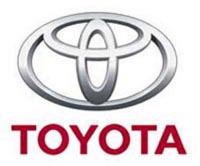New driver simulator for testing car safety showed by Toyota

A giant dome that swivels, tips and swishes on a rail to deliver the sensations of maneuvering on real-life roads – this is Toyota's new driving simulator for testing safety features.
A Lexus inside the 4.5 meter (15 foot) high, 7 meter (23 foot) diameter dome provides the sense of acceleration, vibration and sound of driving a regular car.
The internal surrounding sides of the dome show 360 degree computer graphic imagery of roads and landscape, complete with signs, pedestrians, street-side stores and faraway Mount Fuji - all synchronized to move with the simulated driving.
In a demonstration for reporters Monday at a Toyota technology center, the dome moved in a 35-meter (115 foot) long building, skidding on a rail horizontally and vertically.
When a driver pushed on the brakes, the dome tilted forward to give the effect of stopping. When the driver turned the steering wheel to the right, the dome cocked to the right to give the feeling of turning.
Toyota Motor Corp. officials said the simulator is useful for testing safety features without endangering drivers, such as warning beeps about oncoming vehicles. The machine will also be handy for analyzing how drowsiness and intoxication affect driving, they said.
The big unknown about making safe cars is understanding the human brain and other aspects of human behavior, and the simulator will help solve such questions, said Executive Vice President Kazuo Okamoto.
Other automakers have developed driving simulators, but they tend to be stationary, giving the effect of driving by shaking and rocking, and showing imagery only in one spot. The dome and other moving parts of Toyota's simulator weighs 78 tons, the company said.
The U.S. National Highway Traffic Safety Administration has a machine similar to Toyota's that allows people to feel acceleration, braking and steering. Toyota said it had borrowed heavily from NHTSA's technology.
The two reporters who drew lots for trying out Toyota's simulator said the braking and acceleration felt much like real-life driving, although one reporter said the graphics weren't realistic enough.
There are no computer graphics of a crash. Hitting a computer generated pedestrian merely makes the image disappear.
Toyota engineer Takashi Yonekawa said the simulator's purpose is not to test driving skills. It will be used to develop safety features tailor-made for various kinds of drivers, including the elderly and beginners, he said.
Koji Endo, auto analyst with Credit Suisse in Tokyo, who also took part in the demonstration, said he thought the simulator was a long-term investment.
"There's no immediate return, maybe for 10 years," he said.
Toyota declined to say how much the simulator cost to make. There are no plans to sell the simulator, it said.
On a test course, Toyota separately showed experimental wireless safety features, such as those that warn cars of a red light ahead through beeping and the image of a traffic light that pops up near the speedometer. The system uses infrared beacons on roadside poles.
A similar technology, which uses a wireless network, warns a driver of an unseen pedestrian with a GPS device.
Such warnings systems are being developed by other automakers, including Nissan Motor Co. and Honda Motor Co. Toyota said the three automakers plan to begin collaborating on the technology on road tests next year.
Subscribe to Pravda.Ru Telegram channel, Facebook, RSS!


